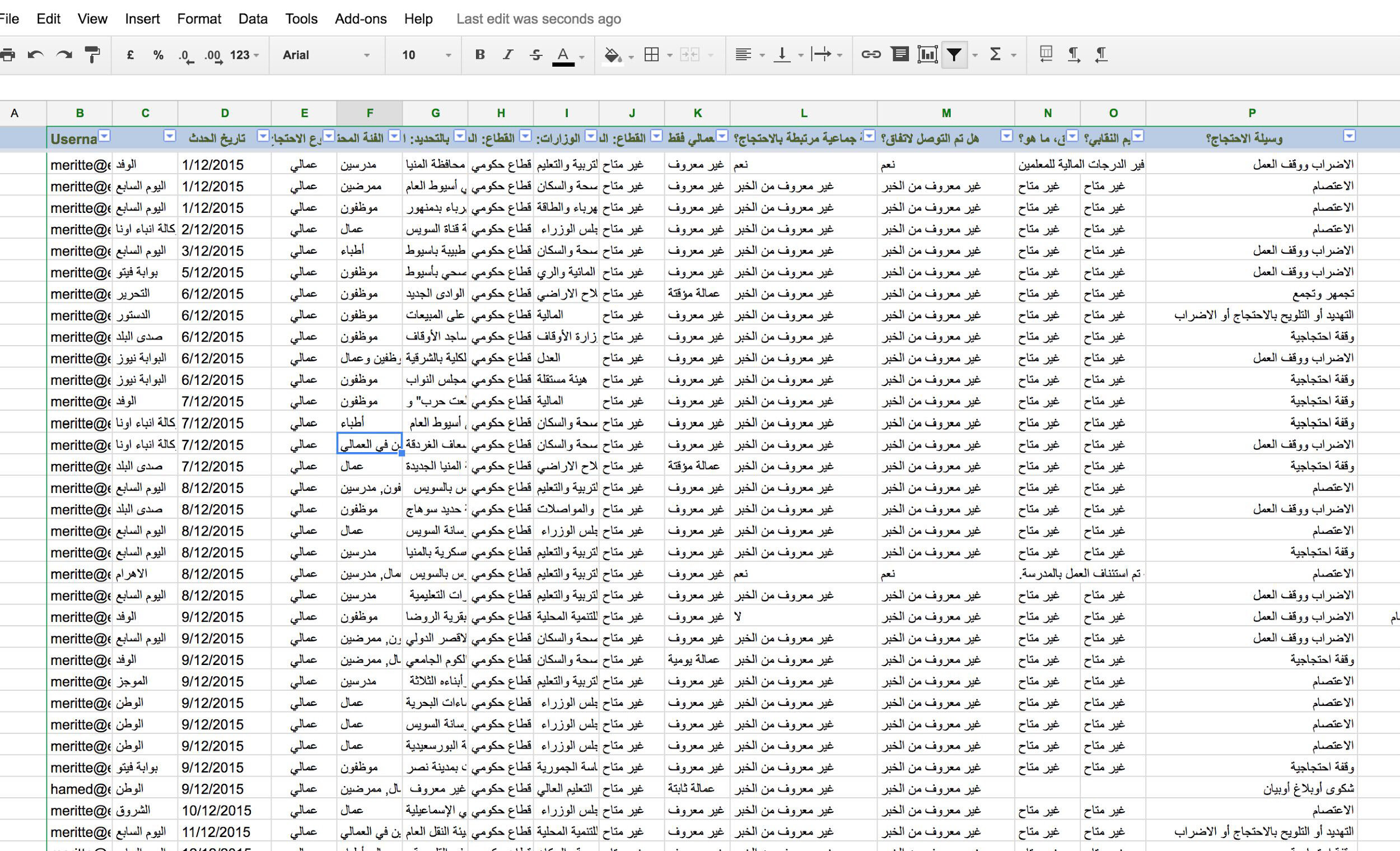Silence Of A Land
About the CSO
The Egyptian Center for Economic and Social Rights (ECESR) is an Egyptian non-governmental legal institution, founded in 2009, arising from values of justice, liberty and equality
The team
Left to right: Anna (data researcher, Chile), Amira (CSO representative, Egypt), Alaa (data journalist, Jordan), Radwa (CSO representative, Egypt), Piero (designer, Italy), Henar (designer, Egypt), Martin (developer, Sweden)
About the topic
At the start of the Arab Spring movement in 2011 the public protests in Egypt became the focus of increased global interest. The spotlight was mainly directed towards political protests and workers actions as well as social and economic protests were largely ignored by the media and researchers, despite the fact that successive post-revolution authorities showed a clear negative interest in them, declaring them as factional.
The substantial efforts by the Egyptian authorities to tarnish the image of workers, economic, and social protests, indicated an aim to reduce their impact and get rid of a social nuisance keeping it on alert.
A look at the data
All ECESR's data was in Arabic, qualitative and spread over multiple spreadsheets with inconsistencies in column headers and there was no structured model to collect it. Categories were very fluid which made it difficult to do the analysis.
The data scientist working with the team partnered with her Arabic-speaking teammates to translate and subsequently recategorise the data. At first there were 100s of possible variables, but the team was able to regroup these and find the stories at the heart of the statistics. Below you can see the original data, the cleaning process, a new data collection form and an example of how ECESR visualised their data before the Data4Change design sprint.
Their objectives
ECESR came to the Data4Change sprint to improve their data collection methods and to create a more structured model for documenting protests. They wanted to create a tool for researchers and journalists to explore data on protests in Egypt and create data-driven documentation and data visualisations that they could use in their advocacy work to change policies.
A sample of the raw data presented to the team.
ResultsRight off the bat, the focus was on finding stories that could explain the insights provided through analysing the data. The team had different entry points for different target audiences, and came up with strong concepts involving CSS animations and drill-down filtering that could be applied on-the-fly. Check out their sketches and final designs below!
A rough storyboard of the user journey and the narrative process informs the prototype of the website. The user is presented with a series of randomised case studies regarding protests in Egypt (for example the case of 'Ousting Morsi'), and then access an exploratory dashboard that shows overall data about the protests in the country.
Dashboard view
Users can interact with the data about protests in Egypt. The default views presents the data divided in the 27 governorates of Egypt. Filters and toggles allow for alternative sorting of the data. The dashboard is an attempt to offer a neutral and objective view on the subject, away from political bias.















